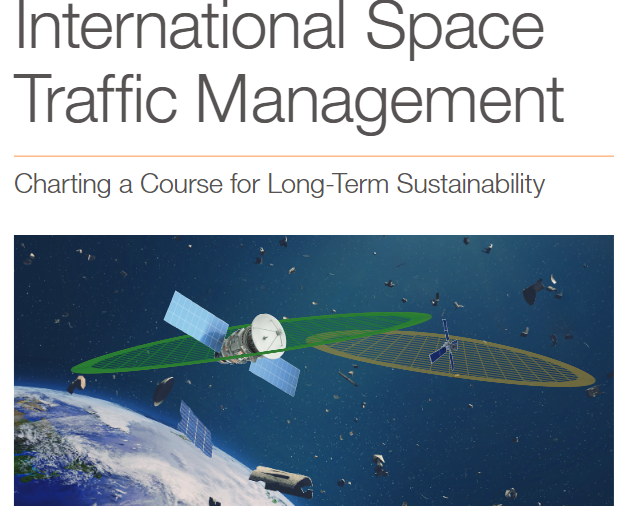“The international community is at a tipping point for space traffic management. Research strongly indicates that the space domain’s safety and sustainability are under clear and present threat from debris and congestion” is one of the conclusions of a RAND report into international space traffic management (STM). The report sets out to chart a course for long-term sustainability by means of a review of official documents, literature and workshops with subject-matter experts to identify possible lessons for the future. It highlights the risks to space safety, security, and sustainability as outer space becomes more congested, contested, and competitive.
The report also takes lessons from the history of the maritime and air domains and the development and implementation of international organizations within those domains help provide a pathway for the development of an international space traffic management organization (ISTMO). An ISTMO will need to achieve sufficient legitimacy and operational power to effectively manage the space domain, says the report.
According to the report, as of December 2022, there were approximately 6,900 active satellites, more than 36,500 pieces of trackable debris (10 cm or larger), and approximately 1 million objects sized 1 cm to 10 cm in space—all of which could cause significant or catastrophic loss of valuable orbital assets in the event of cascading collisions (often referred to as the Kessler Syndrome). Moreover, the number and value of space objects and the services derived from those objects are increasing rapidly.
The authors find at its core, the STM problem is more of a governance problem than a technical one. To avoid interference and collision, space actors must coordinate in the form of communications; data and information exchange; situational awareness; conflict resolution; and defined processes and procedures to determine and adjudicate who will move, when the move will occur, and how the move will be executed to ensure safety, all of which are governance functions.
Key Findings
- The international community is at a tipping point for STM. Research strongly indicates that the space domain’s safety and sustainability are under clear and present threat from debris and congestion. Because of this threat and because the space domain involves international actors (or entities under the jurisdiction and control of states), an international organization is needed to conduct STM. The authors refer to such an organization as an international space traffic management organization (ISTMO).
- There is sufficient research, which has been conducted by government, nonstate, and private entities, to justify the creation of an ISTMO.
- An ISTMO must have sufficient authority and jurisdiction and must ensure that the technical coordination and collaboration between states, industry, and other stakeholders necessary for successful STM governance and operations occur.
- Without sufficient authority, jurisdiction, and implementation of coordination and collaboration, an ISTMO might lack the legitimacy to endure and conduct effective STM.
- An ISTMO must also be able to facilitate and incorporate bottom-up development of STM rules and activities that include governments, industry, and nongovernmental organizations.
- To accomplish these objectives, an ISTMO will need to be funded, staffed, and resourced to maintain the necessary level of expertise and a dynamic operational tempo.
Recommendations
- Ensure that the international community agrees that the creation of an ISTMO is the best course of action. To accomplish this, the authors recommend that spacefaring and nonspacefaring states call for an ISTMO convention to be held at the United Nations (UN).
- Ensure that this convention focuses on the current body of research that supports the creation of an ISTMO drawing from the analogous aspects and lessons learned from other domains, particularly the maritime and air domains.
- Ensure both the gathering of international experts on STM and the continued growth of institutional expertise on STM. This expertise is needed to ensure that both a convention and any nascent organization it might create are equipped to be legitimate, effective, and long-standing.
- Conduct additional research to develop a source of sustainable and equitable funding for the ISTMO. Both traditional funding mechanisms common to the UN system and some nontraditional options could be used. Although these nontraditional options, such as orbital-use fees or a tradeable bond system, are underdeveloped, they offer further areas of research and discussion for space domain stakeholders to consider.
For more information visit:
www.rand.org




